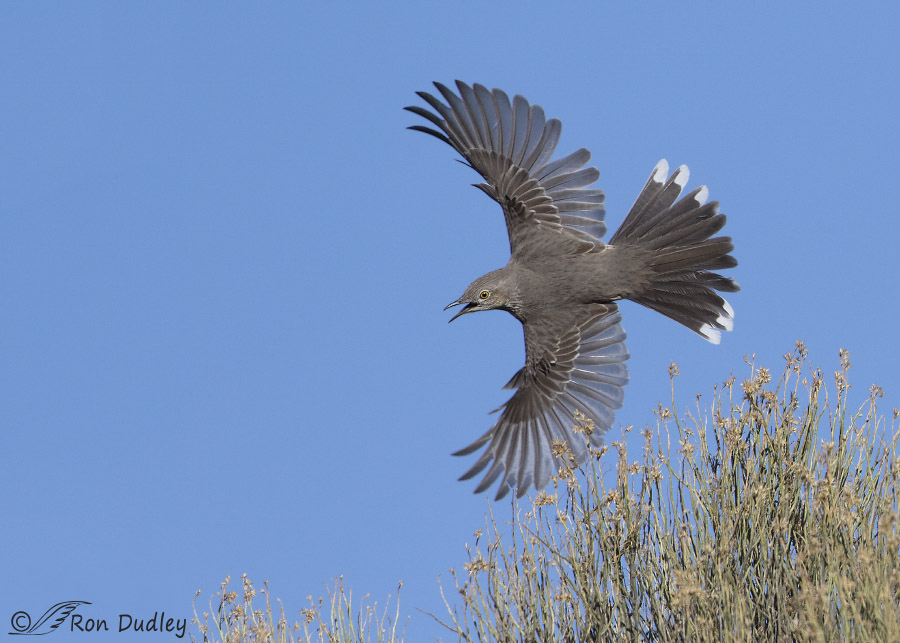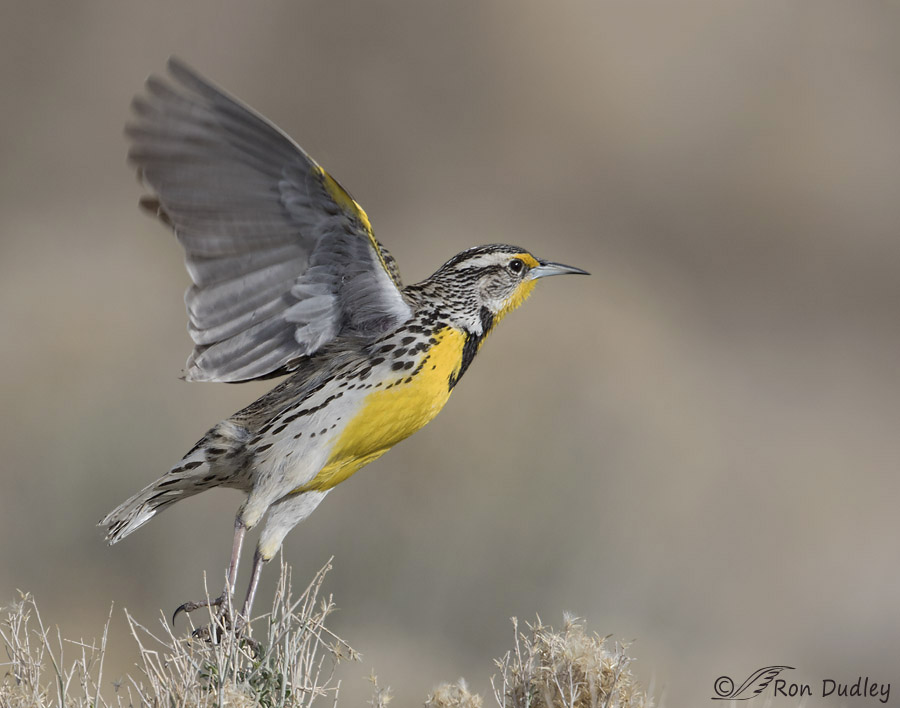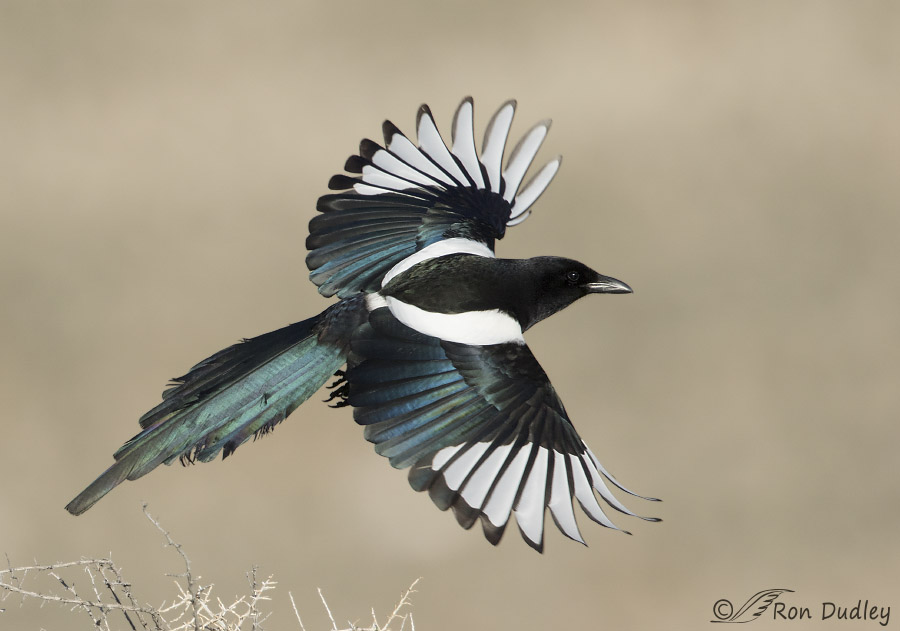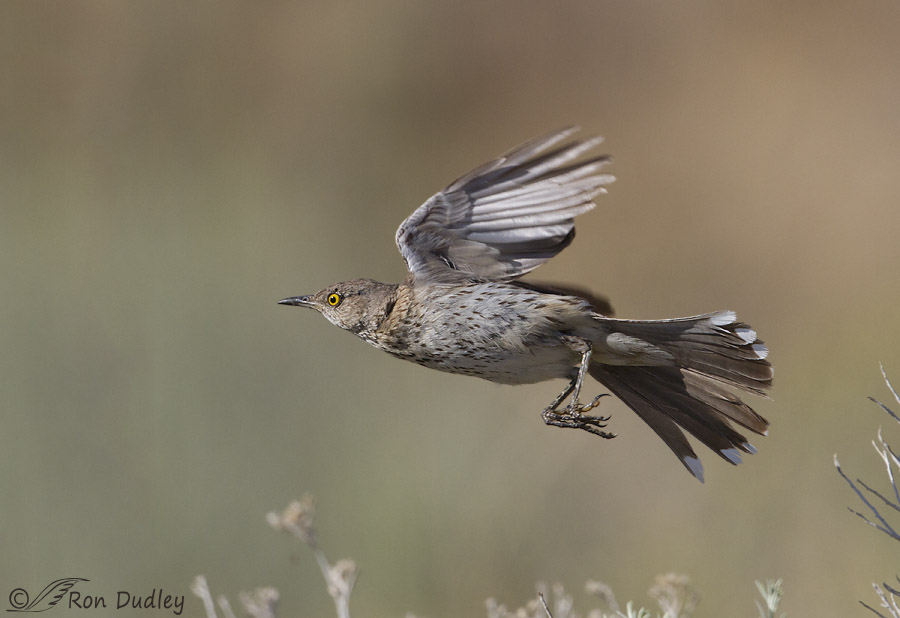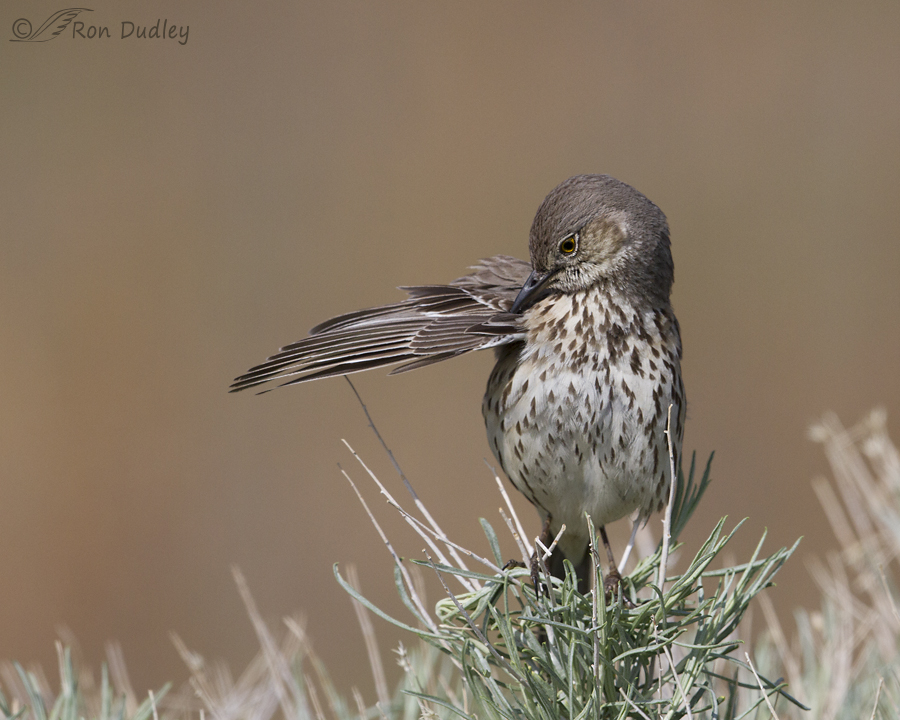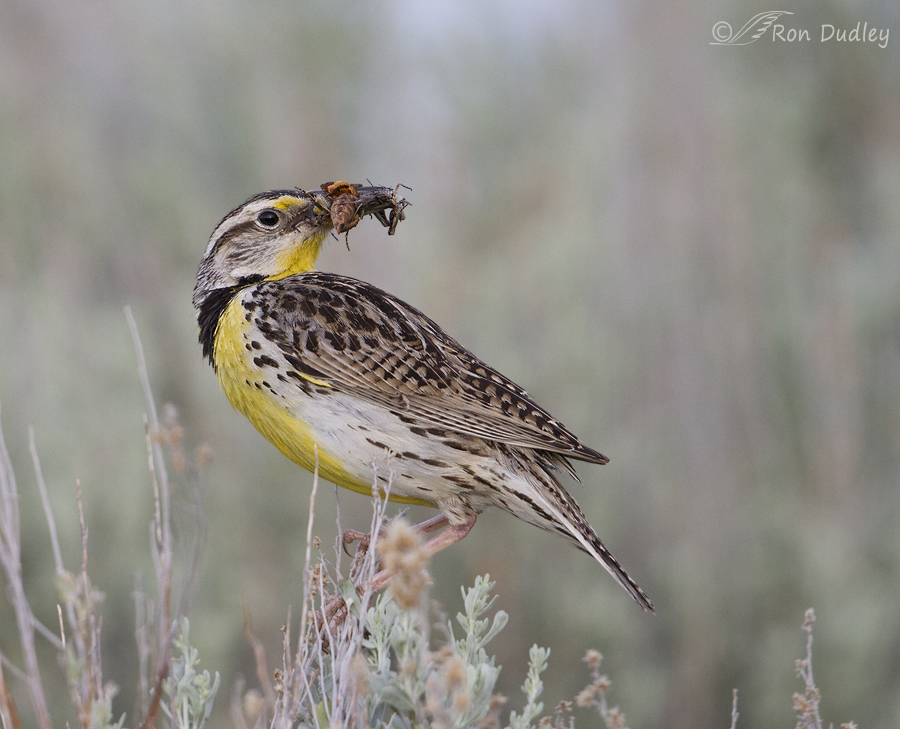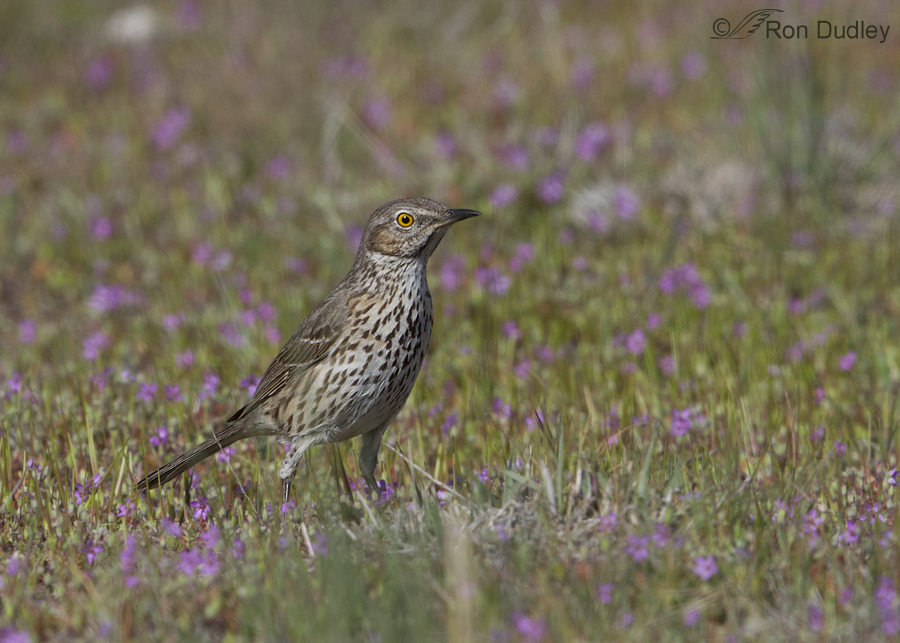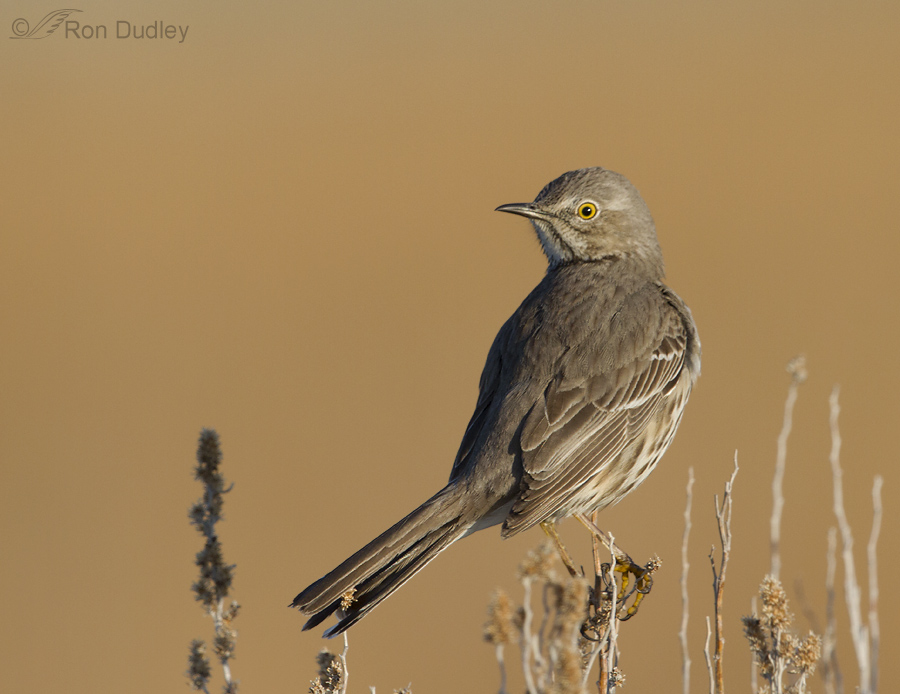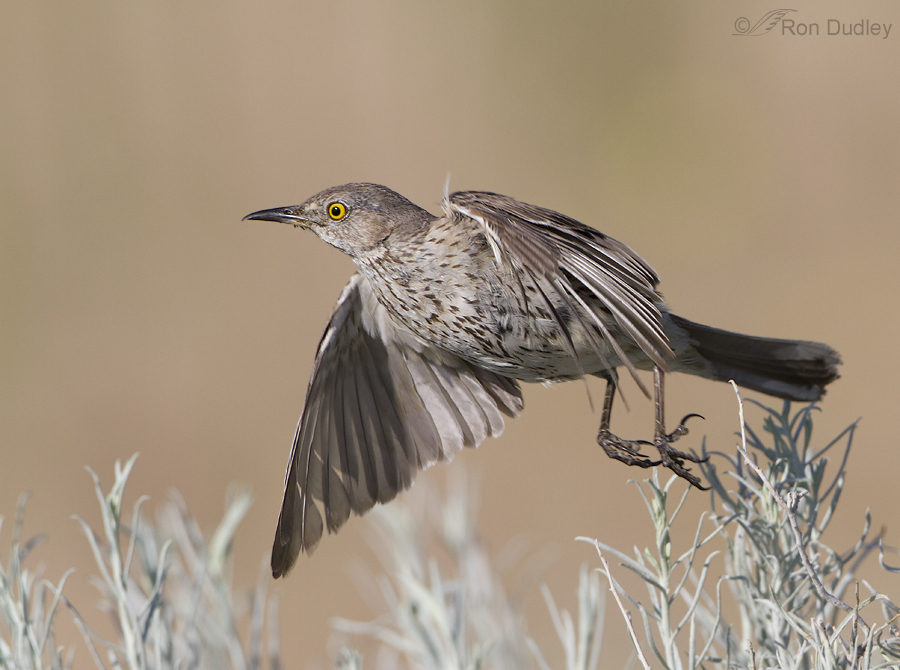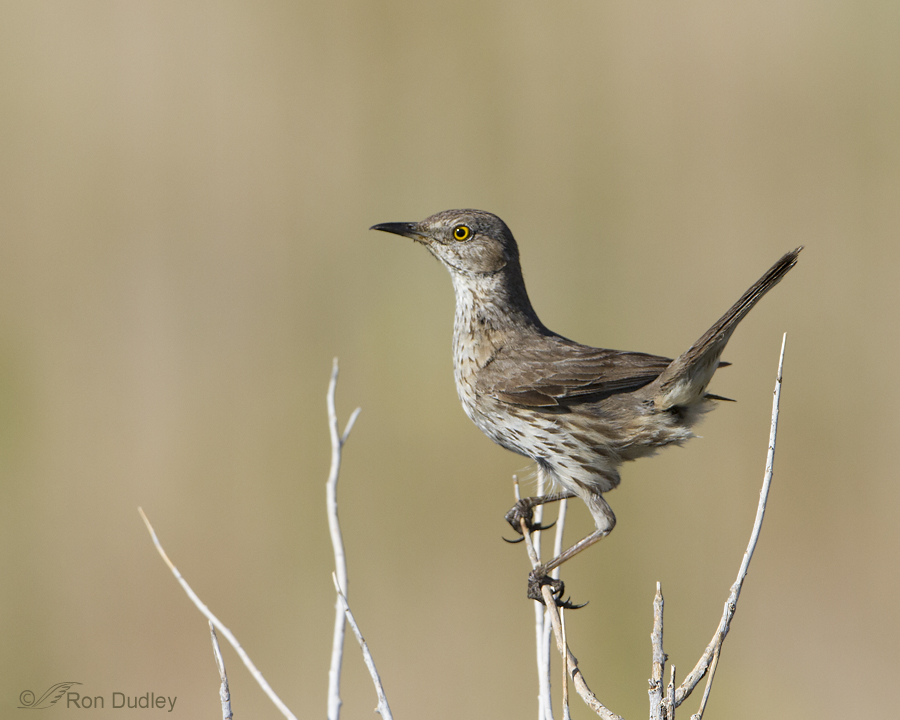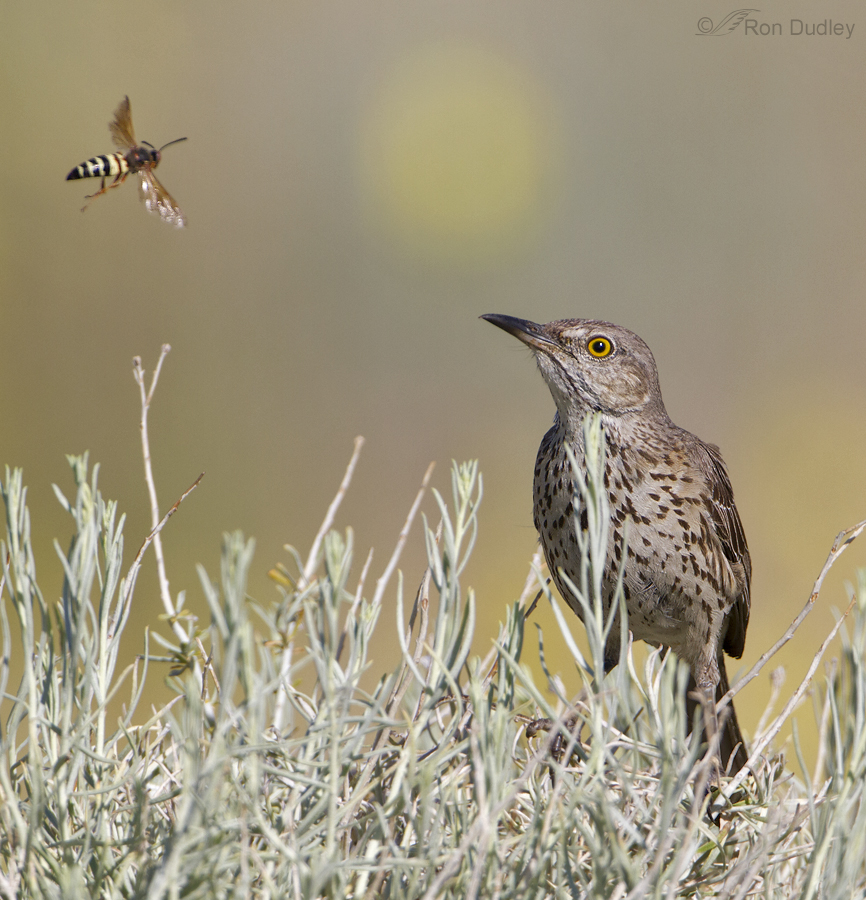Tag: sage thrasher
The Balancing Act of Shutter Speed, ISO and Wing Motion-blur
Sage Thrasher Bilateral Wing Display
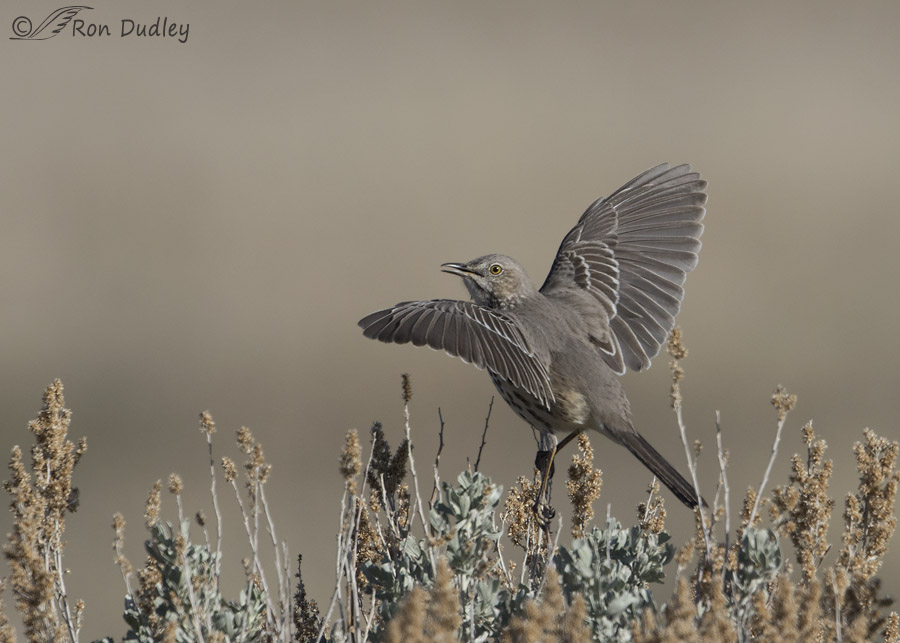
Male Sage Thrashers perform what is called the “Bilateral Wing Display” during courtship and territory establishment. Yesterday morning I was able to photograph the behavior on Antelope Island and though I wish I’d been a little closer I had decent light, a pretty good view of the bird and he performed for me for several minutes so I shouldn’t complain.
Iridescent Magpie In Flight (and an “early bird” of another species)
Yearning For Sage Thrashers
Sage Thrasher Posing For Me
Birds, Bugs And Frustrations On Antelope Island
A Sage Thrasher, A Buffalo Chip And A Little Family History
My “First Of Year” Sage Thrasher
Some Recent Shots To Break A Bird Photographer’s Heart
Occasionally I just have to vent about some of my photography frustrations.
Every nature photographer has them. Landscape photogs spend countless hours waiting for just the right light and dramatic clouds which often never materialize, those specializing in wildlife (especially mammals) often cannot even find their subjects, macro nature photographers have to deal with slight breezes that can ruin their shots and those who focus on flowers have a limited season.
But bird photographers may have the most challenging subjects of all (perhaps my bias is creeping in here, but I doubt it).
A Sage Thrasher Kinda Morning
Sage Thrasher Attitude Adjustment
The Sage Thrasher And The Wasp
Sage Thrasher On Rabbitbrush
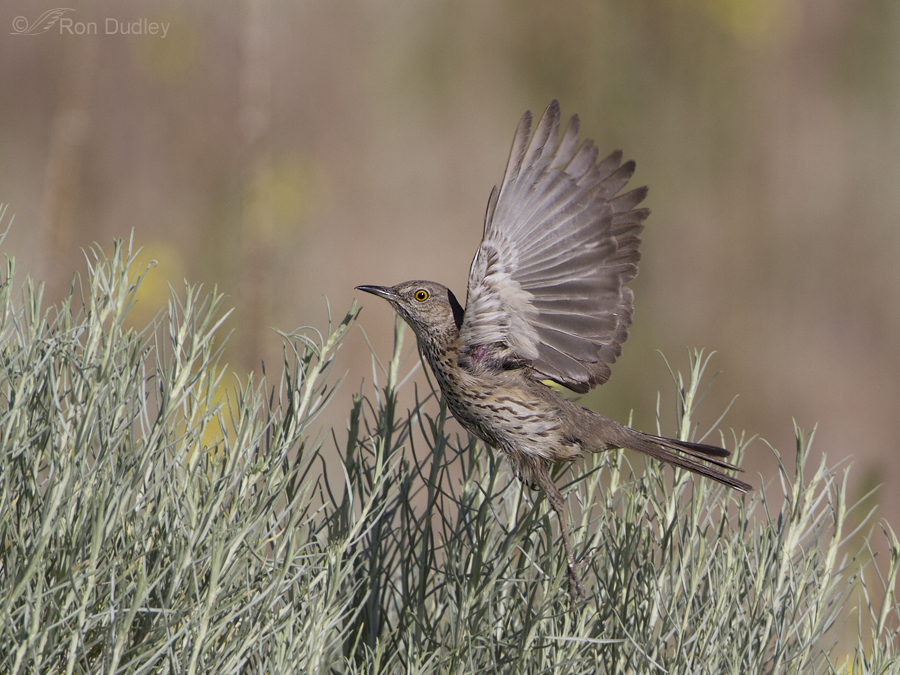
Though there’s a fair number of Sage Thrashers on Antelope Island they’ve been a difficult quarry for me. Originally called the Mountain Mockingbird, this smallest of the thrasher species is known to be particularly elusive, frequently running on the ground rather than taking flight and their wandering habits during migration have caused them to be poorly studied.
Bill Deformities
I’m seeing more bill deformities “out there” than I used to and that disturbs me. The latest example was a Sage Thrasher we found on Antelope Island four days ago. This is what a normal bill on a Sage Thrasher looks like. Notice that the upper mandible is slightly longer than the lower one with a curved tip at the terminus and that both mandibles fit together tightly showing no evidence of a gap between them. But in this thrasher the upper mandible is significantly shorter than the lower and the curve of the two mandibles doesn’t match so they don’t fit together well, leaving a gap. This is definitely not a temporary, voluntary position of the bill as I have about a dozen shots of the bird over a period of about a minute that show the same thing. The two mandibles never fit together cleanly and the upper one is definitely shorter. With this head turn you can see the other side. I can only imagine how this would interfere with normal preening as the bird attempts to draw the individual feathers through the bill to lock the barbs together. An extreme crop of the previous image. Notice how the back of the mandibles touch each other and prevent the rest of the bill from coming together because their curves don’t match along the entire length of the bill. At first I thought that the end of the lower mandible looked damaged or eroded but perhaps there’s just something on the bill that…
The Balancing Act of Shutter Speed, ISO and Wing Motion-blur
Sage Thrasher Bilateral Wing Display

Male Sage Thrashers perform what is called the “Bilateral Wing Display” during courtship and territory establishment. Yesterday morning I was able to photograph the behavior on Antelope Island and though I wish I’d been a little closer I had decent light, a pretty good view of the bird and he performed for me for several minutes so I shouldn’t complain.
Iridescent Magpie In Flight (and an “early bird” of another species)
Yearning For Sage Thrashers
Sage Thrasher Posing For Me
Birds, Bugs And Frustrations On Antelope Island
A Sage Thrasher, A Buffalo Chip And A Little Family History
My “First Of Year” Sage Thrasher
Some Recent Shots To Break A Bird Photographer’s Heart
Occasionally I just have to vent about some of my photography frustrations.
Every nature photographer has them. Landscape photogs spend countless hours waiting for just the right light and dramatic clouds which often never materialize, those specializing in wildlife (especially mammals) often cannot even find their subjects, macro nature photographers have to deal with slight breezes that can ruin their shots and those who focus on flowers have a limited season.
But bird photographers may have the most challenging subjects of all (perhaps my bias is creeping in here, but I doubt it).
A Sage Thrasher Kinda Morning
Sage Thrasher Attitude Adjustment
The Sage Thrasher And The Wasp
Sage Thrasher On Rabbitbrush

Though there’s a fair number of Sage Thrashers on Antelope Island they’ve been a difficult quarry for me. Originally called the Mountain Mockingbird, this smallest of the thrasher species is known to be particularly elusive, frequently running on the ground rather than taking flight and their wandering habits during migration have caused them to be poorly studied.
Bill Deformities
I’m seeing more bill deformities “out there” than I used to and that disturbs me. The latest example was a Sage Thrasher we found on Antelope Island four days ago. This is what a normal bill on a Sage Thrasher looks like. Notice that the upper mandible is slightly longer than the lower one with a curved tip at the terminus and that both mandibles fit together tightly showing no evidence of a gap between them. But in this thrasher the upper mandible is significantly shorter than the lower and the curve of the two mandibles doesn’t match so they don’t fit together well, leaving a gap. This is definitely not a temporary, voluntary position of the bill as I have about a dozen shots of the bird over a period of about a minute that show the same thing. The two mandibles never fit together cleanly and the upper one is definitely shorter. With this head turn you can see the other side. I can only imagine how this would interfere with normal preening as the bird attempts to draw the individual feathers through the bill to lock the barbs together. An extreme crop of the previous image. Notice how the back of the mandibles touch each other and prevent the rest of the bill from coming together because their curves don’t match along the entire length of the bill. At first I thought that the end of the lower mandible looked damaged or eroded but perhaps there’s just something on the bill that…


